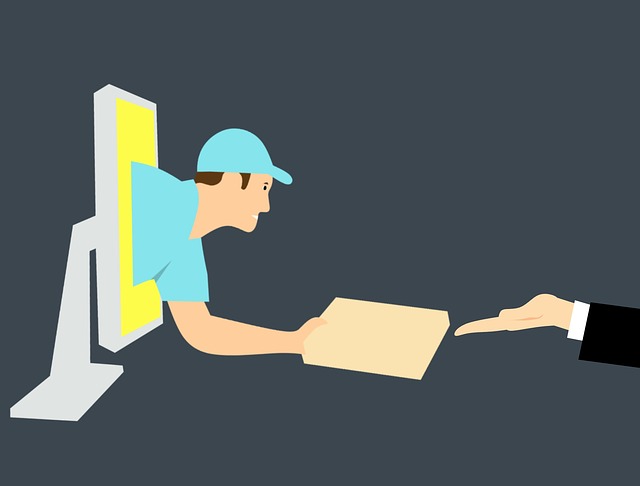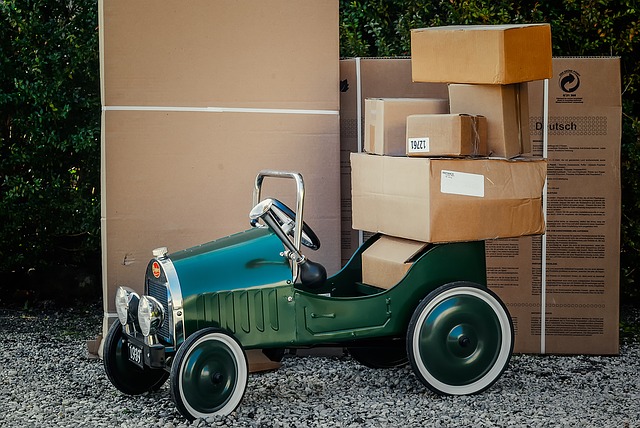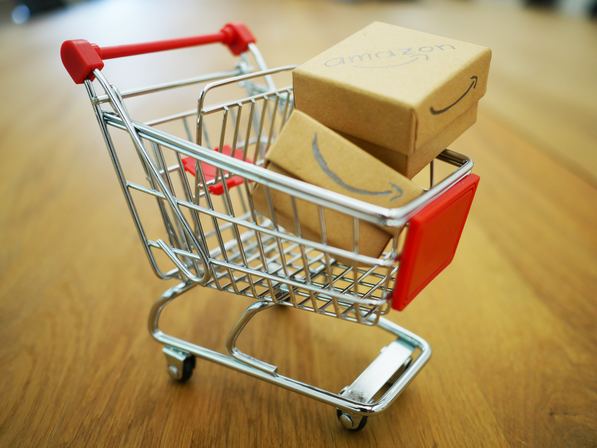Last-mile delivery systems are the final and imperative part of online shopping. Putting it down simply, the last-mile delivery system is the process of picking products from the transportation hub and delivering them to the destination hub. Here the transportation hub can be a local retailer or a warehouse and the destination hub can either be a commercial or residential area. Last-mile delivery has been gaining great attention due to the high demand of omnichannel retailing. Omnichannel retailing is a combined effect of both online and offline channels. The ideal omnichannel shopping extends from brick-and-mortar business to smart internet-based devices such as desktops, PCs and mobile devices and is a unified set of all these along with social media, storefronts, conventional marketing and online advertising.

The Major Cost Components in a Last-Mile Delivery System
Delivery is the major cost consuming part of online shopping that can go up to consuming over 40 per cent to 50 per cent of the total investment. As consumers are turning more into e-commerce websites to shop, speedy deliveries are not just a bonus feature anymore but is a requirement to stay at par with the leading eCommerce sites.
The costs components can be categorized to majorly four categories:
Staff
There has to be ample staff and drivers to deal with shipping and delivering the packages at the right time. There can be days when there are fewer deliveries and seasonal days or special offer days when there can be abundant shipments to be delivered. Hence, keeping track of maintaining the required number of delivery persons is crucial for the uninterrupted service.
Vehicle Costs
Efficiently managing the shipment products with the day of delivery is the inevitable step here. There come situations when the delivery is an LTL (Less Than Truckload) that can become an excessive cost. Comparing running a heavy vehicle with little goods and a small truck with TL (Full Truckload), an ideal solution will be to use the TL option to cut down on fuel costs and add them to mileages you can get!

Transportation cost
Transportation is the most cost consuming process in last-mile delivery systems. There can be cases where there can be bulk orders in an urban region but lesser orders towards the rural regions. This will add on to the fuel expenses of travelling long distances to just deliver or pick up a product.
Cost to Customer Experience
This one another component that is mostly forgotten. The cost to customer experience includes both delivery and pickup facilities. There are at times, the product bought will be returned due to a certain reason. This can add on to an extra cost as the shipping and return pickup are mostly free off charges.
How to Reduce the Cost of Last-Mile Delivery Systems
Reducing the costs of Last-Mile Delivery systems and effectively optimizing it can bring in a consistent improvement in the revenue of your online business. Here are a few measures you can easily implement in your business to tackle this situation.
Invest in a Route Optimization Script
As we had seen in the former section, using a route optimization software can cut down the transportation costs. The drivers can use the application to easily create a route map they can follow the day to complete the deliveries on time avoiding the congested areas and finally cutting down on the fuel costs and save more time for extra deliveries at the same time!
The software will help in establishing the best routes and assigns orders based on the traffic conditions, the volume of delivery, time of arrivals, etc. This will help in saving a lot of time in preparing the routes manually. Apart from the fuel cost, this will help cut short the operational costs and overhead expenses.
Optimize the Load Distribution
Just like the heading describes, this step is to completely make use of the truck’s loading capacity and allot goods and load on the vehicles. This step strives on to maximizing utilization of the resource and to minimize the response time on overloading. Hence, it is optimal to execute the transportation of goods in a larger volume like a fully loaded truck in order to reduce the transportation costs, number of deliveries and avoid damages that can be caused by friction with extra spaces. With better load distribution you can also take a hand in lowering the number of vehicles required and human resources to take it out to the destination which all result in increased efficiency and accuracy.
This will require an efficient system of batching goods to be delivered in a single go, I.e; a single delivery person can take care of a major portion of the complete set of orders of a particular location that can easily cut down the costs on the human resources and transportation costs at the same time and is also easier to manage.
Placement of Warehouses in the Urban Areas
Depending upon the type of online business your company serves the warehouses could be different kinds such as x-dock, sun warehouse, etc. As has been discussed previously, last-mile delivery systems work on transporting goods from the warehouse to the destination point. Hence, keeping the warehouses within the geographical limits of urban areas will help in cutting down costs on travelling back and forth in fetching the packages to be delivered from longer distances. This can, in the long run, save more time and minimize fuel consumption with a reduced number of miles travelled. This will also benefit the supply chain enterprise with improved speed and responsiveness on the deliveries.
Choose the Delivery Vehicles Wisely
Companies need to figure out the vehicle alternatives to be used for deliveries that will depend on various constraints such as geographical locations, the number of deliverable packages, specific purposes and traffic conditions. There comes in a variety of choices to choose from motorbikes, scooters, minivans, mini trucks and larger trucks that will eventually serve the purpose and at the same time does reduce the time and cost of deliveries. Last-mile deliveries all work on timely and speedy deliveries so you might consider using a motorbike or any two-wheeler, for instance, to reach out easily in traffic and congested areas whereas use minivans or trucks for the rural areas wherein taking out the deliveries can save time with cutting down the total time and resources required for the deliveries if were with different delivery persons on two-wheelers.

Remember the Possibility of Reverse Logistics
One part of online shopping that mostly ignored in discussion is the return pickups. There is the whole process of the last mile delivery taking place in the reverse order with the delivery person picking up the package from the customer, checking for any issues and other documents (like bills or tags), returning it to the collection centre, distributing to secondary outlets/ local retailers, resale/ recycle and finally again back to a new customer. As it seems to read, the process is as well as tedious as the conventional delivery system as well.
As per studies have proven, online shopping is probable to have products being returned at least 30 per cent of the time as compared to the shorter scales of 8 to 9 per cent in brick-and-mortar stores. It has also been proven that more than 90 per cent of buyers are ready for exchange or re-purchasing the products if the return process is completed smoothly with almost 80 per cent of them preferring free return policies. While this exerts pressure on the smooth functioning and planning that has to be made on the proper functioning of the reverse logistics, this is one big part that can substantially alter the last mile delivery expenses.
Practising Flexible Delivery Options
This can be a turn-around solution for many retailers as they can grab a bit of time more on to deliver products. There are many instances when the delivery person has to return without the product delivered. Such situations can be avoided if there can be flexible delivery options depending on the time intervals of a few days and a delivery window varying between two to four hours that can be helpful for the consumer to select the time of delivery so that he/ she can be present at the same time.

With the onset of a single day and fast delivery options, and at the time you do not require the products in a hurry, you can opt for a traditional delivery system that can even come out with exciting offers or cash-backs as can be seen practised by eCommerce websites like Amazon.
In this era of digitalization going over the speed track, it is always good to take a step ahead and employ digital solutions for order and delivery tracking for easily managing the deliveries. Such systems can be made available for both the service provider and the consumer for a better customer experience without staying in doubts of when and where the package is to arrive. Automated dispatch solutions can also be used to effortlessly come down with an efficient dispatch order that will minimize the overall expenses on labour and transportation. Such digital solutions are just a one-time investment that can give you long term ROIs on the overall expenditure.
Very nice post. I just stumbled upon your blog and wanted to say that I’ve really enjoyed browsing your blog posts. In any case I’ll be subscribing to your feed and I hope you write again soon!